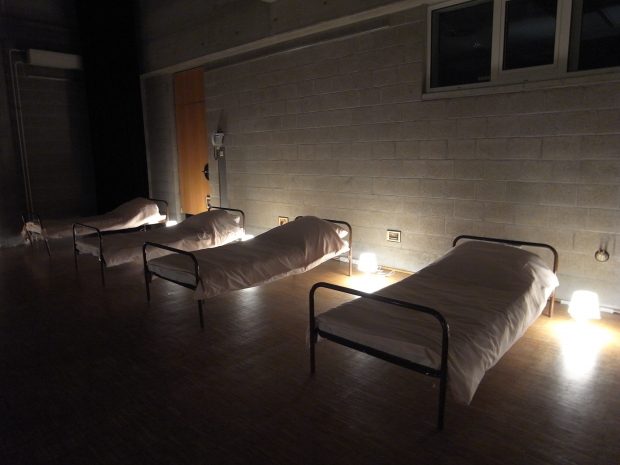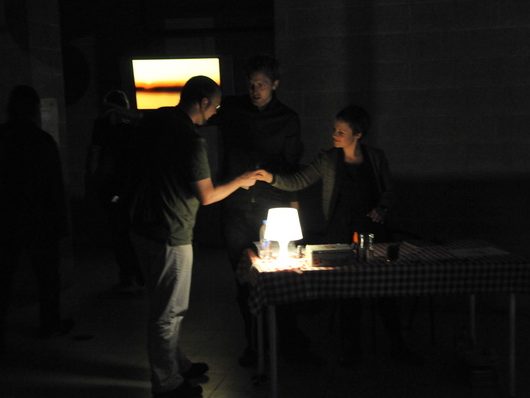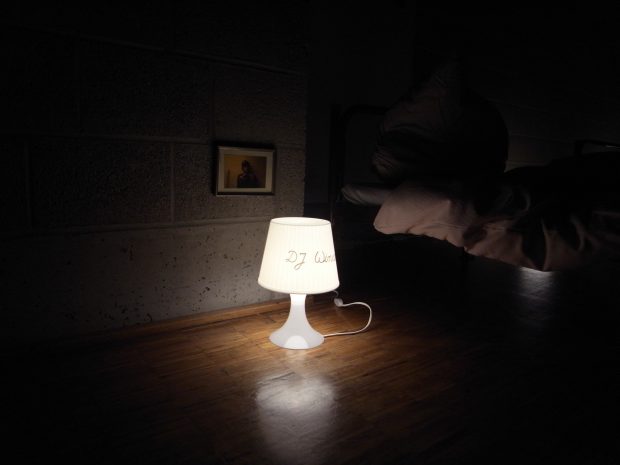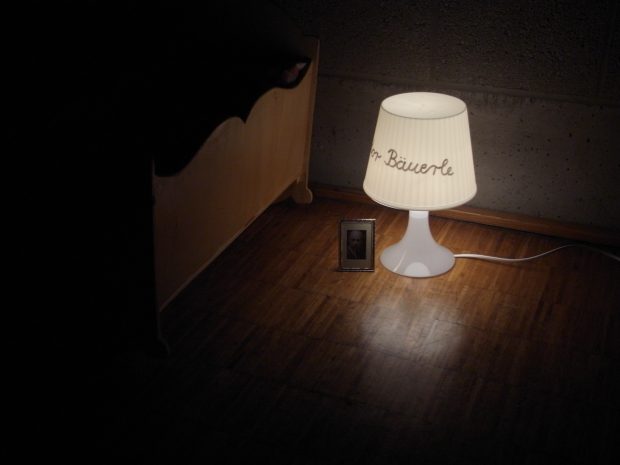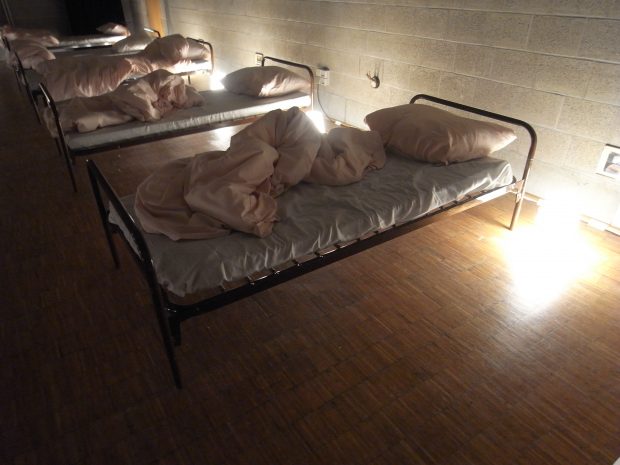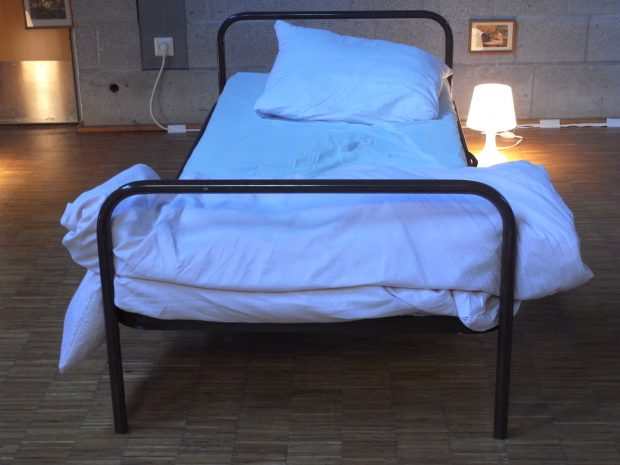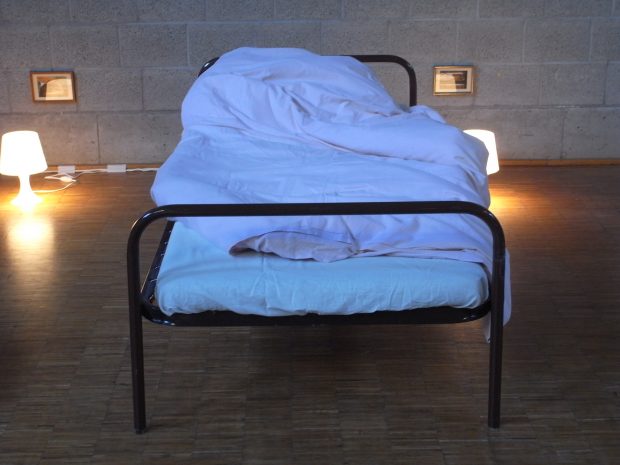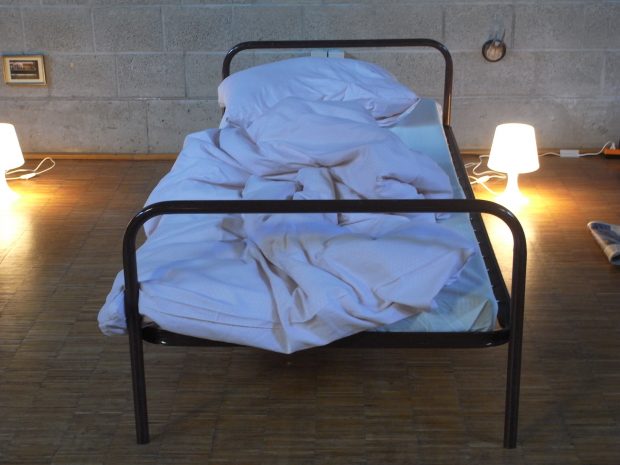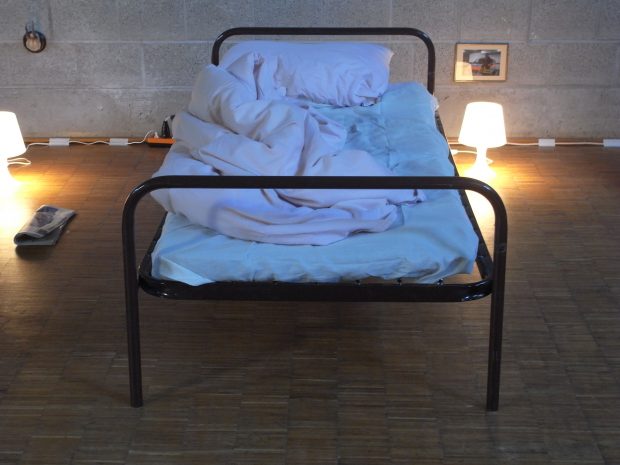Artists: Susanne Kudielka, Kaspar Wimberley, Isabelle von Gatterburg & Nicki Liszta
If we observed a sleeping body closely we would notice a choreography of small muscular twitches, restless turns, breathing patterns and eye movements, relaxation and tension. We dream during the deepest stages of our sleep, often referred to as REM (rapid eye movement) sleep. While we are dreaming our body suppresses the majority of our muscular movements, preventing us from physically acting out our subconscious thought processes.
For the Stuttgarter Tanznacht in 2009 we were invited to create a Schlaflabor (laboratory of sleep) to monitor the choreography of sleep. A dormitory of 12 beds was prepared for an audience to use for the duration of the festival, from 6pm until 6am. During the night a dancer (Isabelle von Gatterburg) and a choreographer (Nicki Liszta) would observe and respond to the sleeping bodies that lay in the dormitory, presenting three short performances at 3am, 4am and 5am. These performances were filmed and offered to those that had been watched.
Each bed was dedicated to somebody we had found working throughout the night in the vicinity of the venue.
Sleepers received the keys to a locker in which they would find a pair of slippers, a small token and a goodnight story that had been created in response to the interviews we had collected from the night-shift workers. We then led our guests to the dormitory. Visitors could sleep for as long as they wanted, from a short 30-minute nap to a 12-hour slumber. At 6am we served breakfast to all those who had slept until the end of the festival.
